#US South America Coffee Market
Explore tagged Tumblr posts
Text
South America Coffee Market: Global Industry Analysis and Forecast 2023 – 2030
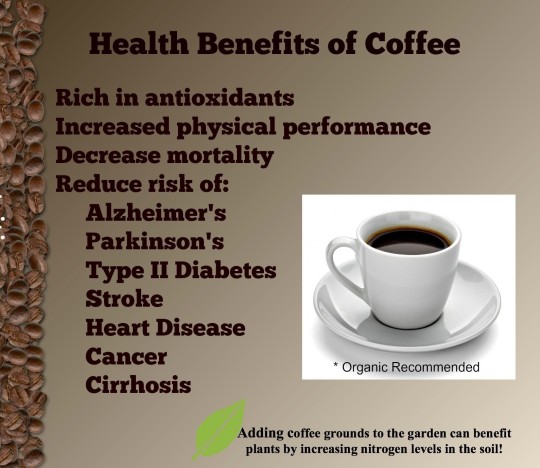
South America Coffee Market Size Was Valued at USD 17,124.87 Million in 2022, and is Projected to Reach USD 23,726.58 Million by 2030, Growing at a CAGR of 4.16 % From 2023-2030.
Espresso beans are roasted to make coffee, a type of beverage. It tastes tart and acidic and has a somewhat black appearance. Because it contains caffeine, coffee has a very clean effect on its drinkers. In the global market for warm drinks, it has the biggest sales volume.
Due to its status as a major producer and exporter of premium coffee beans, South America has a substantial market share in the coffee industry. Much of the world's coffee is produced in nations like Brazil, Colombia, Peru, and others in the region. Because of its wide variety of tastes and cultivars, the South American coffee market is a major supplier of both specialty and commodity-grade coffee beans.
stands out as the world's greatest producer of coffee, both in South America and globally. It is renowned for its expansive plantations and variety of coffee-growing locations. The nation's output has a significant impact on coffee prices worldwide. Conversely, Colombia is well-known for its premium Arabica beans, which are prized for their well-balanced acidity and subtle flavor. Notable production levels of Arabica and specialty coffee are also produced in other nations, such as Ecuador and Peru.
Brazilian production of coffee, especially Arabica and Robusta beans, has a significant impact on market availability and pricing. Colombia, which prioritizes quality over quantity and is well-known for its premium Arabica beans, is also a major player in the international market. The specialty coffee market in Peru is expanding and is becoming more and more well-known for its distinctive and flavorful beans that are grown in lower amounts while maintaining an emphasis on sustainability and quality.
Get Full PDF Sample Copy of Report: (Including Full TOC, List of Tables & Figures, Chart) @
Leading players involved in the South America Coffee Market include:
Atlantica Coffee, Juan Valdez Café, Olla Negra, Cafe Britt, Don Francisco's Coffee, Pachamama Coffee, Volcanica Coffee Company, Cafe La Virginia, Fazenda Cambara, Solides Café, Iguaçu Coffee, Cafe Sello Rojo, Cabrales S.A., Pilão Coffee, Cacique de Cafe Solúvel, Cafex Colombiana, Procafecol
The latest research on the South America Coffee market provides a comprehensive overview of the market for the years 2023 to 2030. It gives a comprehensive picture of the global South America Coffee industry, considering all significant industry trends, market dynamics, competitive landscape, and market analysis tools such as Porter's five forces analysis, Industry Value chain analysis, and PESTEL analysis of the South America Coffee market. Moreover, the report includes significant chapters such as Patent Analysis, Regulatory Framework, Technology Roadmap, BCG Matrix, Heat Map Analysis, Price Trend Analysis, and Investment Analysis which help to understand the market direction and movement in the current and upcoming years. The report is designed to help readers find information and make decisions that will help them grow their businesses. The study is written with a specific goal in mind: to give business insights and consultancy to help customers make smart business decisions and achieve long-term success in their particular market areas.
If You Have Any Query South America Coffee Market Report, Visit:
Segmentation of South America Coffee Market:
By Product Type
Whole Bean Coffee
Ground Coffee
Instant Coffee
Coffee Pods
Capsules
By Variety
Arabica
Robusta
Canephora
By Distribution Channel
On Trade
Off Trade
By Region
South America (Brazil, Argentina, Rest of SA)
Importance of the Report:
• Qualitative and quantitative analysis of current trends, dynamics and estimates;
• Provides additional highlights and key points on various South America Coffee market segments and their impact in the coming years.
• The sample report includes the latest drivers and trends in the South America Coffee market.
• The report analyses the market competitive environment and provides information about several market vendors.
• The report provides forecasts of future trends and changes in consumer behaviour.
• Comprehensive fragmentation by product type, end use and geography.
• The study identifies many growth opportunities in the global South America Coffee market.
• The market study also highlights the expected revenue growth of the South America Coffee market.
Our study encompasses major growth determinants and drivers, along with extensive segmentation areas. Through in-depth analysis of supply and sales channels, including upstream and downstream fundamentals, we present a complete market ecosystem.
If you require any specific information that is not covered currently within the scope of the report, we will provide the same as a part of the customization.
Acquire This Reports: -
About Us:
We are technocratic market research and consulting company that provides comprehensive and data-driven market insights. We hold the expertise in demand analysis and estimation of multidomain industries with encyclopedic competitive and landscape analysis. Also, our in-depth macro-economic analysis gives a bird's eye view of a market to our esteemed client. Our team at Pristine Intelligence focuses on result-oriented methodologies which are based on historic and present data to produce authentic foretelling about the industry. Pristine Intelligence's extensive studies help our clients to make righteous decisions that make a positive impact on their business. Our customer-oriented business model firmly follows satisfactory service through which our brand name is recognized in the market.
Contact Us:
Office No 101, Saudamini Commercial Complex,
Right Bhusari Colony,
Kothrud, Pune,
Maharashtra, India - 411038 (+1) 773 382 1049 +91 - 81800 - 96367
Email: [email protected]
#South America Coffee#South America Coffee Market#South America Coffee Market Size#South America Coffee Market Share#South America Coffee Market Growth#South America Coffee Market Trend#South America Coffee Market segment#South America Coffee Market Opportunity#South America Coffee Market Analysis 2023#US South America Coffee Market#South America Coffee Market Forecast#South America Coffee Industry#South America Coffee Industry Size#china South America Coffee Market#UK South America Coffee Market
0 notes
Text
𝙊𝘾 𝙄𝙣𝙩𝙚𝙧𝙫𝙞𝙚𝙬⭑.ᐟ: 𝕵𝖊𝖒í𝖒𝖆
⛧|Name: Jemíma Ámbar del Mar Hernández ⛧|Nickname: La Sombra, Lt., Mrs. Dangerous Jemíma (by rookies), Jem or Jemí (by family/Keegan) ⛧|Gender: Female ⛧|Star sign: Scorpio ⛧|Personality type: Chaotic Neutral/ISTJ ⛧|Height: 5'10 (180 cm) ⛧|Orientation: Straight ⛧|Nationality/Ethincity: Mexican ⛧|Fave Fruit: Any tropical fruits ⛧|Fave Season: Summer ⛧|Fave Flower: Marigolds or Roses ⛧|Fave Scent: Coconut cream, vanilla and musk. Keegan’s cologne ⛧|Coffee, Tea, or HC: Coffee black and strong, which helps her get through long hours of work. However, she also enjoys a good cup of tea occasionally, but her preferred drink is definitely coffee. ⛧|Average Hours of Sleep: Typically gets around 6-7 hours of sleep a night, which is not ideal for her physical and mental health. (Sometimes she struggles to sleep due to anxiety and stress, and other times she forgets to sleep because she’s too busy working.) ⛧|Dog or Cat person: Both ⛧|Dream trip: Her dream trip would likely be a journey through the ancient ruins and natural wonders of South America. As a Latina herself, she has a deep appreciation for the rich history and culture of the region, and has always been fascinated by the mystique of the ancient Mayan and Incan civilizations and would likely include visits to the famous ruins of Machu Picchu, the mysterious city of Teotihuacan, and the bustling markets and colorful streets of Rio de Janeiro. She would also love to explore the breathtaking natural landscapes, such as the lush rainforests of the Amazon and the rugged Andes Mountains. ⛧|Number of Blankets They Sleep With: 1 blanket and pillow are enough to let her sleep (She can sleep without them too, no problem) ⛧|Random Fact: -1: Loves to cook and has a particular talent for making spicy dishes, able to cook a mean batch of street tacos and spicy salsas. -2: A skilled markswoman and can hit a target from over 1,000 yards away and hand-to-hand fighter, having undergone extensive training in martial arts and self-defense techniques. -3: She’s bilingual, both fluent in Spanish and English, having grown up speaking both languages with her family. And often uses Spanish phrases or curses, both to surprise and amuse her fellow soldiers. -4: Despite her tough exterior, she has a soft spot for animals, particularly dogs, and has a passion for rescuing and caring for stray dogs whenever she has the chance.
#call of duty#cod oc#call of duty original character#call of duty ghosts#Jemíma#call of duty oc#cod ocs#cod original character#cod ghosts#cod ghosts oc#cod ghosts original character#shani's thinking cap
12 notes
·
View notes
Text
What a Weekend!
This past weekend I was invited to Pella, Iowa from the team at Visit Pella.
Pella, IA is East, and just a touch South, of Des Moines, IA. It's home to the largest working grain windmill in the country, which you can tour!

Dutch culture is very strong as many of the early residents of Pella were from The Netherlands. While I was sharing my walk-through town on Instagram stories (now on my highlight reel) I received so many messages from my friends in Europe thinking I was there, too! They said the large trucks gave it away that I was still in America. ;)
What surprised me the most on my trip to Pella was how much of a foodie destination this can be! We had excellent meals and pastries originating from Europe as well as some American classics. There was not a bad meal here to be found! (And we ate enough to be able to tell if there was...)
The desserts over at Vander Ploeg Bakery were scrumptious. Don't forget to get a Dutch Letter when you visit! It's a puff pastry with an almond paste.

We had coffee over at Iris Coffee - a scientific take on coffee! Pairing what would taste best to get you the most amazing cup of coffee.
Big Acai Bowl had loads of smoothies and yogurt options for a midday snack or paring to breakfast!
Van Veen Chocolates had these spectacular cookie butter dark chocolates. Had to tell ourselves not to eat them all in one sitting!!!
We had some amazing beef jerky and beef sticks at In’t Veld’s Meat Market. It was some of the best we've ever tasted!
Liberty Street Kitchen was inside our hotel, The Royal Amsterdam Hotel . We had steak and fish and they were absolutely delicious. What really knocked our socks off was the crème brûlée! (Which we ate too quickly to get a picture of.)

We also had some of the Pella Red wine from The Wijn House . It was a perfect way to relax while at the Royal Amsterdam Hotel after walking around town all day.

I won't lie to you, by lunchtime on our first day in Pella my husband was already discussing when we could come back with friends and family.
We didn't even get a chance to enjoy all the outdoor activities near Lake Red Rock. Although I am fairly certain I will go there to enjoy the next astronomical event!
I really could go on and on AND ON about how much my husband and I enjoyed Pella, Iowa. Whether you're visiting Iowa, traveling across the US on I-80, wanting to go to Europe without a passport, or just looking for an amazing place to visit, Pella needs to be on your vacation dream list.

See more of my Pella trip on the @bad_science_jokes Instagram with a full walkthrough or my little synopsis video.
#partnership#americas dutch culture#americasdutchculture#dutch culture#go dutch for a day#iowa#travel iowa#midwest travel#usa vacations#vacations in the us#america vacations#things to do in iowa#des moines#iowa city#quad cities#omaha#nebraska#michigan#wisconsin#pieter pella#bad science jokes#@bad_science_jokes#visitpella#visitpellaia#godutchforaday#pella ia#pellaia#pellaiowa#dutchculture#iris coffee pella
68 notes
·
View notes
Text


People
Hunger Has Natural Causes, Right?
Despite the fact that the world produces 1.5 times as much food as is needed to feed the human population, starvation and famine are endemic to modern capitalism. 900 million people die from starvation each year, but there is no global shortage of land to grow food. The UN estimates that there is enough land to feed a world population of 14 billion people. But what is it being used for? As in the ‘developed’ North, large landowners control the vast majority of land. In 83 countries, 3% of farmers control 79% of farmland, much of it left unused in order to maintain profits. Big Food made over $7bn profit from the South in 1990, and probably far more through transfer payments. It uses its economic power to force down the prices of rice, coffee, sugar, cocoa and cotton. Average prices in 1989 were 20% down on those of 1980. This led to an increase in foreign debt for Southern countries, with consequent increased economic hardship for the poor majority (higher taxes, inflation, etc.). Brazil has an area of farmland the size of India left uncultivated while 20 million rural poor are landless; the richest 1% owns 15 times as much land as the poorest 56% of Brazilian farmers. In Guatemala, 2% of landowners own 66% of the land. In the Philippines agribusiness producing sugar, cotton and pineapples for export has pushed 12 million peasants into the lowland forests.
Drought in Africa is part of a millennia-long cycle that human societies adapted to. It is cash crop exploitation, the market economy and taxation that produce starvation, not drought. During the 1970s, when famines first began to be reported regularly, ships that brought relief supplies to the port of Dakar left carrying peanuts, cotton, vegetables, and meat. In Bangladesh, often cited as the model for the Malthusian argument, 90% of the land is worked by sharecroppers and labourers. Many starved after the 1974 floods, while hoarders held on to four million tons of rice. In the mid-80’s severe famines occurred in the Sahel countries of Burkina Faso, Mali, Niger, Senegal and Chad yet during the same period record harvests of cotton were exported to the industrial centres of the world.
Cash crops go to feed the global supermarket, yielding higher profits for international capital and accelerating global industrialisation. Mexican soil and labour supplies almost 70% of the US market for much winter and early spring vegetables. The result is that agriculture for local consumption is squeezed out and the prices of staple foods rise. Up to 50% of total meat production in Central America is exported, mainly to North America. The “Green Revolution” of the 1970s and 1980s, that the ruling class said would feed the hungry, has in fact only supplied the global supermarket. The same will certainly be true of the ‘wonder crops’ of the GM revolution. The corporate claims that GM and industrial food production in general will ‘feed the world’ are straightforward lies. The maize/soya/ animal product system they are pushing so heavily is not a rational way to produce food — an acre of cereal is estimated to produce 5 times as much protein as one devoted to meat production, an acre of legumes (beans, peas, lentils) 10 times as much and an acre of leafy vegetables 15 times as much.
#hunger#humans#world hunger#classism#ecology#climate crisis#anarchism#resistance#community building#practical anarchy#practical anarchism#anarchist society#practical#revolution#daily posts#communism#anti capitalist#anti capitalism#late stage capitalism#organization#grassroots#grass roots#anarchists#libraries#leftism#social issues#economy#economics#climate change#climate
5 notes
·
View notes
Text
Chapter 218 Trivia (Part 1)
The final crafting project already!? :( (I know it's only for the moon mission groundwork, but… The end is nigh.)

Gen's excited for Twitter to come back, but I think Senku is too. It was a major source of data for him before the first petrification happened.



The oysters are here because Hiroshima is Japan's largest oyster-producing region. They're most well-known for their pacific oysters (Crassostrea gigas), specifically the Hiroshima variety.



Eucommia ulmiodes, commonly known as the hardy rubber tree, is native to China and features as one of the 50 fundamental herbs in Chinese herbology. It does well in a wide range of environments, & can handle colder weather than other rubber trees, but is nigh-extinct in the wild.


As Chelsea says, the tree is resistant to pests and disease, and fossils of Eucommia have been found in Europe and North America.
Unfortunately, the oldest fossils of Eucommia are from the Cenozoic period, the era after dinosaurs.


Unlike the rubber trees the KoS found in South America and Indonesia, most of the latex in Eucommia is found in the leaves, not the trunk. This makes it harder to harvest, and is probably why Senku needed to travel elsewhere for a better source.
The cables are a simplified version of current submarine cables, though there's many versions of them.
The modern boats are also designed the same, with large spools of cable getting unwound off the back. The buoys on the cable are only necessary in shallow waters.




We have the beginnings of a coffee shop turf war: Xenobucks versus Francoisbucks.
(If anyone draws mermaid Francois please share!)
Also, Francois' gorgeous filigree table travels with them!



Coffee isn't native to Hawaii, but it was brought over in the early 19th century to create Kona coffee, one of the most expensive coffees in the world.
A coffee market crash in 1899 brought Japanese workers over to Hawaii to work on the plantations.


For the last several chapters, Senku's been talking about how difficult it is to make a semiconductor, and how it'll take at least 5-10 years to do, so they have to use parametrons instead.
Well he's here holding a transistor, which needs semiconductors. Congratulations?


Modern transistors, if they're reliable enough, are used on submarine cables to boost the signal. Since everything in Dr. Stone so far has been remarkably reliable, it's fair to assume they used them.
This logo is a parody of General Electric (Xeno Electric?), a very large American conglomerate that primarily focuses on aviation, power, renewable energy, and digital industry.


(Next part)
16 notes
·
View notes
Note
You’ve probably gone over this before but tumblr’s search engine sucks butt. So, what would each culture’s staple crops and livestock (for both meat and byproducts) be? How much would globalization come into play, like how irl potatoes are originally from South America but have become one of the most important staple foods across the world?
Staple crops and livestock vary throughout the Provinces due to climate and geography, though trade over the centuries has meant that ingredients like saltrice from Morrowind and honey from Skyrim are in constant circulation around the continent. Nonetheless, here are some uniquely local ingredients you'll find across Tamriel.
Altmer
Summerset's temperate climate makes it the ideal place to grow all sorts of exotic fruit, especially stone fruit. From peaches to lychees, nectarines to cherries, Summerset produces the largest quantities of these fruits (with the trade embargo around the Great War and Dragon Crisis making them an extremely sought-after prize). And don't forget the wine! Summerset is also famed for its gorgeous vineyards and even more gorgeous wines. However, juicy and flavourful grapes are beloved by almost anybody, making them a valuable staple crop too.
Livestock in Summerset is nothing particularly exciting. Merino sheep are farmed for their wool, which is a luxury export beloved by northern Provinces, while meat comes in the form of cattle and chickens. However, High Elves particularly love their wild-caught fish and herons, which are populous on their home island.
Argonians
Once again, fruit is a major export from Black Marsh, but the fertile (if hostile) region is home to some of Tamriel's best agricultural soil. From cocoa and coffee beans, saltrice and coconuts, to padan and banana leaves and more, you'll find all sorts of wonderful plant-based ingredients in Black Marsh. However, something that has gained in popularity following the Argonian diaspora has been palm wine, a potent alcoholic beverage.
As for livestock, you'll find bantam guar, guar lizards, various poultry, goats, and even farmed frogs and lizards to be popular. Sheep and cattle are far less popular due to the upkeep required for them to stay healthy in the swampy environment, making beef and mutton less popular and more expensive than in other Provinces.
Bosmer
The Bosmer are famed for their meat and animal byproducts, particularly from timber mammoths and sugar mammoths. Whether it's meat, pelts, or milk, these beasts are much beloved by the Wood Elves who take great care in rearing them.
Other popular exports from Valenwood include alcoholic beverages like rotmeth and jagga, as well as kopi luwak- a luxurious type of coffee made from beans found in civet cat excrement, thus making them Green Pact-friendly. And of course, Valenwood produces some of Tamriel's finest cocoa beans, mostly used for export. However, have you truly lived until you've tried salted sugar mammoth caramelised milk chocolate from Woodhearth?
Bretons
In High Rock, sheep and cattle are the most popular livestock to farm due to their versatility, with a constant demand for their meat, horns, skins, and milk. While it's nothing exciting, the animals in the region are usually grass-fed and free range, spanning acres of farmland (which can sometimes result in cultists and the like infringing upon the livelihood of livestock). Chickens, geese, turkeys, and ducks are also popular for their meat, down, and eggs, with High Rock producing some of Tamriel's best duck meat.
With regards to staple crops, wheat is a major export and features heavily in Breton cuisine, especially in bread.
Dunmer
The volcanic ash of Morrowind is key to its success in growing all manner of weird and wonderful crops. Market stalls across Vvardenfell and Blacklight bustle with sellers touting mushrooms of all kinds, saltrice, comberry, marshmerrow, hackle-lo, canis root, and much more, all of which are consumed locally as well as across Tamriel.
Regarding livestock, it should come as no surprise that the big money is in bug farming. Kwama mines produce cuttle, scuttle, scrib jelly, and kwama eggs, making them the backbone of Morrowind's mages and chefs alike. Nix-hounds and guar are raised both by town Dunmer and Ashlanders, while wild nix-ox is also popular for those who can afford it.
Imperials
Cyrodiil spans terrain from the snowy Jerall Mountains to the swamps of Blackwood. As a result, the Province is relatively self-sufficient in that it produces the bulk of its own consumption, from livestock to greens. Speaking of greens, battaglir, a type of weed, is a staple in the Imperial diet, making wild-foraged and farmed battaglir a key crop in the region. Like Summerset, Cyrodiil is also famed for itswines, and is proud of its unique grapes of every size, flavour, and colour (including ones that taste like cotton candy).
Livestock in Cyrodiil is about as generic as can be: cows, sheep, goats, poultry, and horses. While meat is a staple part of the Imperial diet, milk is also important as it is used to make the cream and cheeses so prized by the Province.
Khajiit
What don't the Khajiit grow or rear? From Southern Elsweyr's rich moon sugar and rice paddies to the North's edible cacti and tea, the Province is full of exotic and scrumptious delights that are highly prized across Tamriel. Ingredients are valuable both raw and processed, and form the backbone of the Khajiiti economy. Samar Pekoe tea, for example, is wild-harvested from caves and is beloved by tea aficionados across the continent, and fetches a hefty price for its rarity. Pellitine cacao and coffee beans are also a staple in any self-respecting chef's kitchen.
In terms of livestock, you'll find guar, poultry, beef, and goat to be popular, as well as wild game like jerboas, terror birds, antelope, and addaxes. Game meat can often be purchased from Bandaari nomads, who hunt the animals themselves. Whether fresh or dried into jerky, who doesn't want some moon sugar-cured addax jerky for the road?
Nords
Foreigners in Skyrim are often shocked by the range of produce we're capable of producing in our cold and often inhospitable lands. Fish and horker are consumed in great amounts locally, as well as being one of the Province's major exports. Goat from the Reach, cattle from Whiterun, and honey from the Rift are always in high demand.
Apples and jazbay grapes are probably the most valuable crops in Skyrim, followed by wheat and other fruits and vegetables. The former two are used in cider and wine, both of which are valued across the Provinces.
Orcs
Wrothgarian Orcs differ from Betnikh Orcs who differ from Wood Orcs and so on... so in this case, it really varies. For Wrothgarian Orsimer, echatere is the main source of meat and milk, while in Betnikh it's fish, and in Valenwood, timber mammoth. All these groups also enjoy game, from rabbit and wolf to pheasant and venison, which features heavily in regional Orcish cuisine. Wild honey from Betnikh is also another notable animal product that bears mention here.
In terms of crops, there aren't many of note aside from valuable herbs and spices. Frost mirriam, which is also loved by alchemists, and wrathberries, known for their violently bitter taste unless prepared correctly, are two of the most important plants you'll find for sale at any stronghold.
Redguards
I've said it before and I'll say it again: goat, goat, and more goat. Unless you're a coastal Redguard with access to seafood, it's likely that your main source of meat and milk will come from goats. Whether it's feta or kebabs, it's almost always goat meat, as they wander all through Hammerfell like they own the place. However, Redguards are also renowned for breeding horses, and the uh... faulty ones are generally turned into food. Spiced horse blood sausage and spreadable horse 'nduja are a staple in households across Hammerfell.
With staple crops, you'll find that corn, coconuts, palm fruit and oil, bananas, coffee, cinnamon and other spices, and cocoa are plentiful. These are all consumed in great amounts within the Province, but are also highly prized across Tamriel.
77 notes
·
View notes
Text
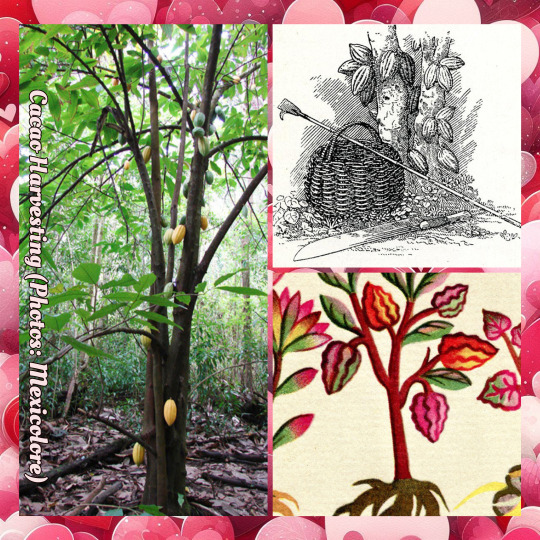

Giving chocolates is a way to show your love on Valentines Day. Human beings have been in love with chocolate and the Cacao tree (Theobroma cacao) for thousands of years, and today we will learn about the romance of culture and chocolate.
Although Cacao is most famously associated with Mesoamerican cultures, genetic studies indicate that Cacao was domesticated by indigenous Americans around 5,300 years ago in the Upper Amazon region. From there, Cacao cultivation spread north to Mexico. The Cacao fruit pulp was more commonly consumed in South America in Pre Columbian times while the Mesoamericans invented the technique of fermentation and roasting to utilise the Cacao nibs.
Archaeological evidence, such as chemical residues on ancient pottery shards, pinpoints the first use of Cacao drinks in Mesoamerica around 1600 BCE. By the time of the Classical Mayan civilization (250-900 CE), ground cacao nibs were mixed with water and spices by careful pouring between vessels to make a nourishing and invigorating hot drink which was consumed by people of all social classes. In the later Mexica (Aztec) civilization, cold cacao drink or xocoatl (bitter water in Nahuatl) exquisitely flavoured with flowers, fruits, chillies, and spices was reserved for the elite and ceremonial occasions. Cacao seeds were used as a form of currency for trade and barter during the Mexica Empire.
After the conquest of the Mexica Empire by Spain in 1521, cacao was one of the many new plant-based foods brought to Europe. In Spain, the locals of Andalusia experimented with the spicy xocoatl by adding cane sugar and dairy ingredients. It is said that drinking chocolate was so universally popular from the 17th century to the late 19th century that it prevented coffee from becoming mainstream in Spanish culture. Drinking chocolate caught on in the rest of Europe in the 1600’s but it was not until the mid 19th century that innovation in processing and chemistry allowed the invention of solid chocolate candies. Cadbury chocolate company is credited with marketing chocolates as a token of love for Valentines Day in 1868.
Chocolate in the modern world is not always a sweet story. Today, approximately 70% of the world’s cacao is produced in West African countries like Ghana and the Ivory Coast. Sadly, exploitative practices like child labour and enslavement are still rife in these countries’ Cacao farms. Chocolate lovers can help by buying Fair Trade certified chocolate products and other responsibly grown cacao products. Fortunately, cacao can be grown in sustainable agroforestry alongside native rainforest trees especially in Latin America. Cacao’s sacred and medicinal properties are experiencing a renaissance among “chocolate shamans�� around the world who drawn upon indigenous knowledge to make the ethical production and mindful consumption of cacao a healing spiritual experience.
Humanity and Cacao have a long-lasting love that continues to evolve over time, and has the potential to benefit plants, people, and the planet. Ponder the storied history of Cacao if you indulge in chocolate this Valentines Day.
Image credits to Mexicolore
#katia plant scientist#botany#plant biology#plants#plant science#cacao#cacao tree#trees#economic botany#culture#cultural history#chocolate#drinking chocolate#spanish history#native american#mesoamerica#aztecs#mayans#mesoamericans#mexico#ceremonial cacao#shamans#fair trade#chocolates#food history#west africa#cacao nibs#cacao beans#aztec history#colonialism
10 notes
·
View notes
Text

THINGS TO DO: LET’S EXPLORE NEW ORLEANS, LOUISIANA!
New Orleans is a Louisiana city on the Mississippi River, near the Gulf of Mexico. Nicknamed the "Big Easy," it's known for its round-the-clock nightlife, vibrant live-music scene and spicy, singular cuisine reflecting its history as a melting pot of French, African and American cultures. Embodying its festive spirit is Mardi Gras, the late-winter carnival famed for raucous costumed parades and street parties.

Explore the Historic French Quarter
The French Quarter is always a must-do, any time of year. As the city’s oldest neighborhood, the Vieux Carre is packed with gorgeous architecture, loads of history, a wealth of food and music, and a cast of characters including long-time residents, chatty tour guides, and talented street performers

Take a History Tour of the Garden District
Upriver from the French Quarter lies the Garden District. Take a tour of this neighborhood’s grand mansions and historic cemeteries. The houses and history are a draw, but the neighborhood also offers a wealth of shops and cafes, as well as Commander’s Palace, one of New Orleans’ best restaurants.

Relax at the New Orleans City Park & Art Museum
New Orleans City Park offers a lovely respite from the city and is a great place to spend an afternoon, according to recent visitors. Take a nature stroll through the 10-acre New Orleans Botanical Garden (which boasts 2,000 different varieties of plants) or peruse the art hanging in the adjacent New Orleans Museum of Art.
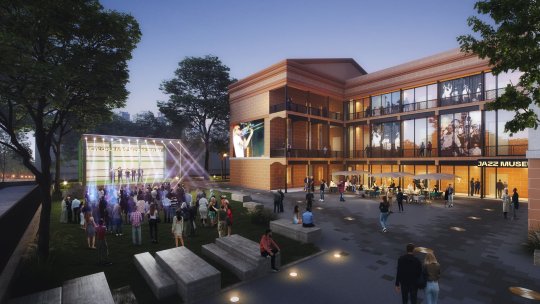
Tour the New Orleans Jazz Museum
It's only logical for New Orleans to be home to a jazz museum, for this is the city where the musical genre was born. At this comprehensive repository of artifacts from the very beginning of the 20th century, you'll see and hear the history of jazz. The museum also presents more than 365 concerts a year and hosts educational programs on the city's legends, from Louis Armstrong to Al Hirt, Louis Prima and more.
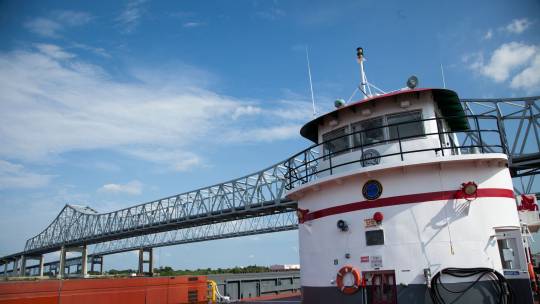
Catch a Ride on the Algiers Ferry
Hop aboard the historic Algiers Ferry to feel the power of the Mississippi firsthand. The short ride on this commuter ferry will give you an amazing view of the city and a few minutes to be one with the river.
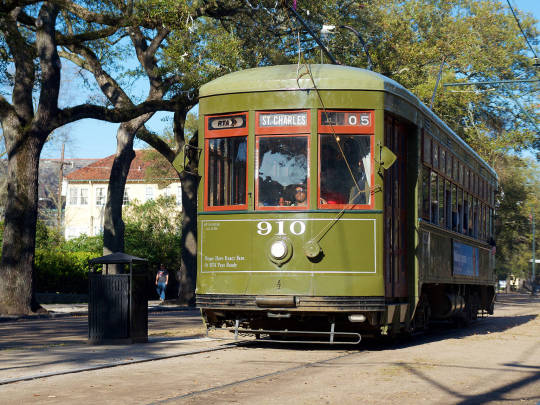
See the City on the Streetcars
New Orleans’ streetcar system has been rolling since 1835. While you can no longer ride the Desire line made famous by Tennessee Williams, the existing lines offer a great way to see the city. The newer red streetcars run out to Mid-City, while the older, original green cars take you down historic St. Charles Avenue, past beautiful houses in the famed Garden District and Audubon Park.
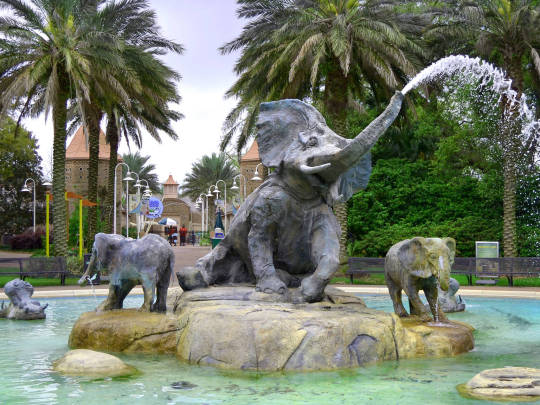
Cool-off at the Aubodon Zoo
Spend an afternoon at one of the top zoos in the country. The Audubon Zoo has world-class exhibits featuring animals from Asia, Africa, and South America. You’ll also see seals, reptiles, and a glimpse of the Louisiana swamp. Located behind Audubon Park, the zoo is dotted with majestic oak trees (keep an eye out for resident peacocks). In the summer, the Cool Zoo water park offers a respite from the heat.

Get Classic New Orleans Fair at Cafe Du Monde
The Original Cafe Du Monde Coffee Stand was established in 1862 in the New Orleans French Market. From beignets to café au lait, Café Du Monde is a New Orleans tradition.

Shop the French Market at the Colonnade
The French Market is a market and series of commercial buildings spanning six blocks in the French Quarter of New Orleans, Louisiana. It is one of the oldest trading posts in the US. Get your milk, bread,and eggs, along with unique souvenirs.

Check out Faulkner Books
Faulkner House Books is located in the heart of New Orleans’ beautiful and historic French Quarter, just off Jackson Square, behind the Cabildo and opposite St. Louis Cathedral’s rear garden. Founded in 1988 by attorney Joseph J. DeSalvo Jr. and his wife Rosemary James, Faulkner House Books is a sanctuary for fine literature and rare editions, including, of course, books by and about Mr. Faulkner.
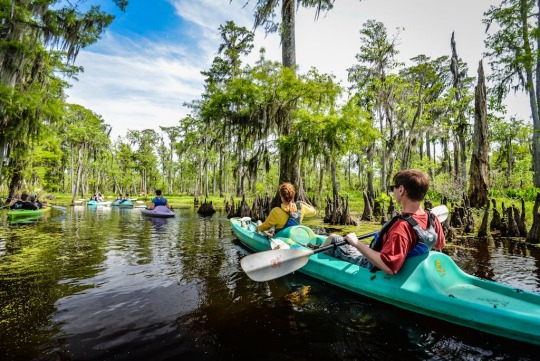
Get Adventurous with the Swamp Kayak Tour
The Manchac Swamp tour is a secluded, calm, and pristine tour. If you are searching for a gorgeous, natural, and picturesque kayak swamp tour – this is your tour! Deep in New Orleans bordering swamps enjoy calm waters with maybe the occasional wildlife spotting.

Join a Alligator Tour
Jean Lafitte Swamp Tours is located just 15 minutes from New Orleans and offers swamp and airboat tours of Louisiana's back country. They guarantee you will get upclose with the swamp’s best residents, alligators.
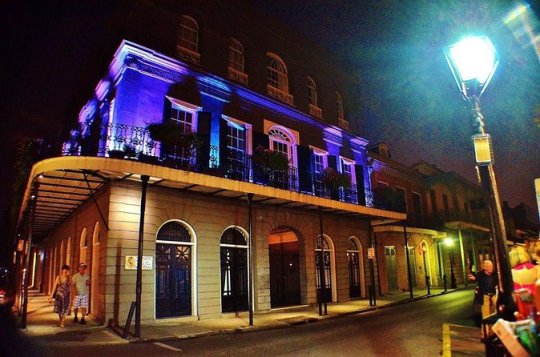
Dare Yourself with the Voodoo Mystery and Paranormal Tour
This New Orleans voodoo and mystery tour takes you into the Big Easy's history of vampirism, occult activity, paranormal occurrences and even piracy. Hear tales of haunted buildings, lost treasure and documented sightings of ghosts and vampires as you explore. Use of pro ghost-hunting equipment is also included.

Get in on a Pub Crawl
Explore the famous Magazine street pubs and bars with this one of a kind pub crawl. Come with your walking shoes and an excitement for the nightlife. Open 7 days a week.
10 notes
·
View notes
Text
Beyond Coogee (Week 2)
After a week of exploring Coogee and the surrounding area, my housemates and I felt prepared to embark on a voyage inland. In Surry Hills, a suburb of Sydney known for its stylish cultural and cafe scene, we embraced our duties as college students and went thrifting. I couldn’t name each shop we walked into or every hat I tried on, but I could, with much gusto and enthusiasm, show you exactly where I got the Nutella Latte that changed my life (I just wish it lasted me more than two minutes). Apparently, Australia has a very strong coffee culture which was well established before coffee chains even tried to enter the market - there are less than 70 Starbucks shops in Australia compared to over 17,000 spread across the 50 United States. The coffee tastes even better after converting the cost of the coffee to USD and seeing that it cost me half the price of its counterpart in America.
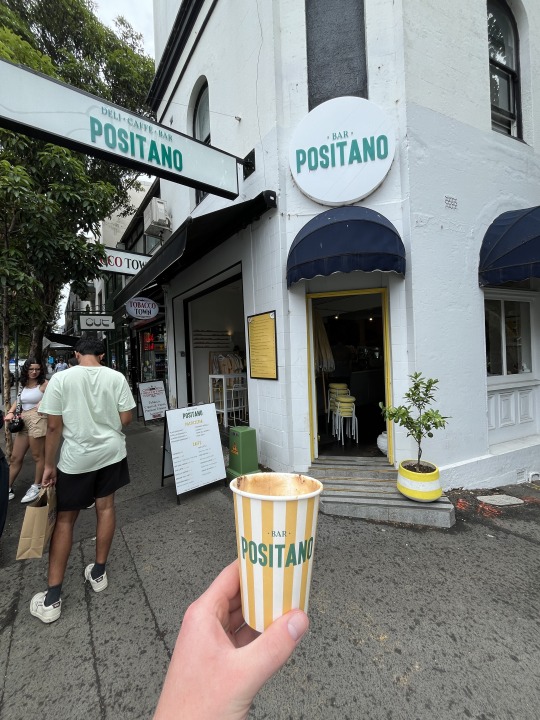
With our appetites built up, we made our way towards Chinatown where we enjoyed some authentic Chinese dishes followed by my favorite Oolong Tea Boba.

A habitual Coogee Beach swim and coastal walk followed later that day joined by Lauren and Shaunak, a student from Georgia Tech. The three of us grew to appreciate each other’s company as we contemplate the philosophical on our walks - everything from how our relationships with our friends and families shape us to commentary on the realities of tourism.

Before we knew it, the NCAA championship was upon us! Luckily, Lauren and I had prepared a watch party at the same local bar where we’d watched the semi-finals. This time, determined to draw a larger crowd, we created a flyer that could be easily passed around amongst students in the area. Though not all UM fans, students crowded the bar and seats ran out after the first hour to watch us take the trophy. Go blue!


Later in the week, a trip to Bondi Beach went south when an incident occurred in the water. I had just gotten out of the water when I noticed a large crowd forming in the northern end of the beach. After some inspection, it turned out that somebody had been rescued from the water and was getting medical attention on the shore. Film crews surrounded the area. Bondi Rescue is a TV show filmed at Bondi Beech that follows lifeguards as they locate drownings, carry out rescues, and handle other conflicts in and around the water of the busiest beach in Australia. The sight reminded me of just how dangerous the ocean can be with waves reaching 5ft above the water. Lifeguarding is often regarded as a common summer job for teenagers in the US, but in Australia it’s taken quite seriously. Just a few minutes at Bondi Beach is enough to see a lifeguard tell someone to swim to a designated area, leave the water if it’s declared unsafe, or even make a rescue. Having been a lifeguard myself, safety is always at the top of my mind when I swim, but let me tell you - these waves are not to be messed with.
With week 3 approaching, I’m excited to take my first trip out of Sydney to the Gold Coast! Cheers!
David Bayer
Biomedical Engineering
University of New South Wales in Sydney, Australia
3 notes
·
View notes
Text
Rich/Poor Masterlist
Black AmEx (ao3) - copperbadge G, 4k
Summary: Bruce isn't sure he wants to use a credit card Tony gave him. Steve isn't sure he even knows how.
Can’t Stop Us RoboDads (ao3) - justanotherpipedream, rebelmeg T, 13k
Summary: The story of how a genius rich kid from New York and a poor military-bound kid from South Philly meet, get into shenanigans, birth a few bots, and forge a life-long friendship.
Diamonds Are A Girl’s Best Friend (ao3) - camichats wanda/tony E, 14k
Summary: Wanda ends up as Tony Stark’s sugar baby to help get her through college. Getting into that relationship was the last thing she expected and falling in love came as a surprise to both of them.
Faithless (ao3) - TheZev mary jane watson/tony E, 7k
Summary: While living in Stark Tower, Mary Jane decides she’s had enough of being Peter Parker’s broke wife. Now she’d rather be Tony Stark’s rich sugar baby.
Fund (ao3) - ardett T, 2k
Summary: Peter overshares. Tony oversteps. Things spiral from there.
Or Tony holds Peter’s college fund over his head and Peter doesn’t get into MIT.
I Know Better (ao3) - Fallenstar92 steve/tony T, 1k
Summary: Not_enough_furytony13 said: "Can u please do a fanfic where Steve and tony's roles are reversed (human au though) where Steve is a rich CEO and tony is a broke mechanic of some sort and he's running from an abusive boyfriend and past. And all of steves friends (who are all rich too) are really protective and think tony is just using Steve for his money but eventually figure out from different events with tony and snippets of Tony's past that tony isn't using Steve and genuinely loves him. Can u please also put a lot of angst in it but also a lot of fluff to balance out (I.e. Steve having to sleep on the couch because of a really stupid fight over something cute and trivial, tony having trust issues, the media being very negative or really positive) I really love your writing so I would really love to see your writing with this prompt!❤️❤️"
Iron Heart & America's Shield (ao3) - CMRandles steve/tony E, 17k
Summary: Stony!AU Steve Rogers is the CEO of a non-profit company that provides jobs and counseling for veterans. Tony Stark is a photographer struggling to make ends meet and pridefully refusing help from his billionaire father. Steve needs a genius artist for a marketing campaign that might snatch his company back from the brink of disaster. Tony needs to pay his rent without selling his soul. What could go wrong? Or, perhaps, very very right.
it's always sunny (in the rich man's world) (ao3) - parkrstark T, 7k
Summary: 5 times Peter worries about money...
Living ain’t cheap (ao3) - Strength_in_pain N/R, 2k
Summary: “I thought our utility bill would be lower. Shit shit shit.” May cried, running a hand through her hair. Or Peter is worried about May because their financial struggles have gotten worse and he ends up needing Tony Stark.
making a living ain't easy (ao3) - snarkymuch T, 2k
Summary: Written for this prompt from Raffeale: May and Peter can't afford rent and food anymore. May broke her arm last week. Now, their main source of income is Peter's job, which takes place almost every hour where he isn't at school. Tony finds out after Peter refuses his invitation to come over for the third time in a row. Because of this, Peter keeps giving most of his food to May. Low blood sugar, super high metabolism, and being Spiderman doesn't really mix well (fainting). Protective Tony Stark, Hurt Peter Parker?
peter’s stars (ao3) - IronPengu, parkrstark steve/tony T, 175k
Summary: Steve and Peter lose their apartment and are kicked out on the streets. Steve has to juggle between jobs to earn whatever money he can, take care of his son while resfusing to let him realize how much they’re trouble in, and keep them warm and safe on the city streets in winter.
So, he really doesn’t have time to date the billionaire that flirts with him everyday as he buys his cup of coffee. Even if he did, he can’t let himself fall for the man. Because if he knew that he lived from a backpack and showered in a public bathroom there’s no way he’d still want him…right?
Running (ao3) - kuro steve/tony G, 1k
Summary: Steve as a rich and famous artist & Tony as a poor mechanic AU. Or something like that.
5 notes
·
View notes
Text
Top 10 Unique Experiences to Enjoy in Uruguay

Currently, it is easy for the residents of the UAE to plan for a vacation to Uruguay. It is quite easy to apply for an Uruguay visa in Dubai enabling the UAE travelers to explore the beauty of this country. The small town of Colonia del Sacramento or the vibrant beaches of Punta del Este are only a few of the many interesting places that will impress every tourist. For a perfect vacation trip that combines both culture, fun and relaxation, then Uruguay is the right place to be.
In this blog, we will share the list of the 10 things to do in Uruguay that will make your trip truly memorable. From history and architecture to magnificent views in the natural surroundings and great wine, Uruguay has much to offer. Living in UAE, getting an Uruguay visa for UAE residents is the key to a world of discovery and we are here to show you all the wonderful possibilities that await in this wonderful country.
Here are the Top 10 Unique Experiences to Enjoy in Uruguay
1. Spend Time at the Beaches of Punta del Este
Punta del Este is one of the most popular beach destinations in South America that offers luxurious life and stunning sandy beaches. What you like to do is sunbathing on the Playa Brava or you want to go for a swim at Playa Mansa, Punta del Este has everything for every type of beach fanatic. It is also important to take a picture with the sculpture called “La Mano” which is the sculpture, which rises from the sand symbolizing the beach.
For food and drinks lovers, restaurants and bars open all night to provide good quality food and drinks after a day on the beach. The town is a great place to unwind and to have fun and should not be missed when visiting Uruguay.
2. Visit the Historic Barrio Histórico
Getting into the Barrio Histórico of Colonia del Sacramento is like going back in time and get to see the oldest part of the city. This world heritage site features some of the old stone paved roads, colonial houses and a mix of both Portuguese and Spanish architecture. Colonia is one of the oldest towns in Uruguay, so if you are interested in history, this place is for you. Stroll through the city, visit local museums and marvel at the houses and cafes that have been preserved from the XIX century.
It will be especially useful to visit Colonia Lighthouse where you can enjoy beautiful views of Rio de la Plata. Regardless of whether you are just sipping coffee in a local café or admiring the sunset, Colonia is very picturesque.
3. Take a Stroll in Montevideo’s Old Town
Montevideo is a cosmopolitan city that is the capital of Uruguay and has a very rich history. Begin your walk in Ciudad Vieja or the Old Town where you can see a blend of colonial structures, historical landmarks, and the contemporary arts. The Mercado del Puerto is a vibrant market that sells various handmade products, tasty food items, and features performances. More art enthusiasts will find the Museo Torres García – a museum of the art of Joaquín Torres García, a renowned artist.
Take a walk at the Plaza Independencia which is the central point of Montevideo and is dominated by a statute of the national hero – Artigas. The Teatro Solís, one of the oldest and prestigious theaters in South America, is also nearby and is another point of interest which should be visited.
4. Wine Tours in the Canelones Region
Uruguay has a vibrant wine industry that is perhaps most popular for Tannat wine which is rooted in the country’s heritage. The Canelones region, just a half an hour drive away from Montevideo, boasts of many wineries that serve excellent Tannat. Visit the wine country for a guided tour of the wine making process and a chance to taste the wines of the region.
Wine tour is a visit to the vineyards, tasting and getting to know the dedicated wine makers and trying different wines with different local specialties. It becomes a must visit for anyone who loves wine and fancy the landscape of agriculture in Uruguay.
5. Take a tour to Hot Springs of Termas de Arapey
Visiting the Termas de Arapey is a great way to take a break and enjoy the therapeutic effects of the thermal springs that make this one of Uruguay’s most famous resorts. These hot springs are found in the Salto Department and are believed to have curative powers. The waters which have been flowing for centuries containing minerals are believed to have a lot of health benefits.
The resort provides the visitors with the opportunities to relax in natural heated pools and have body treatments. Termas de Arapey is located in the middle of nature and allows guests to relax and rejuvenate on all levels. This place is perfect for those who want to get well and be healthy with a scenic view to boot.
6. Discover the Exclusive Wildlife of the Cabo Polonio National Park
Cabo Polonio National Park is one of the kind that lets tourists explore the wild side of Uruguay. The park is off the main road and can only be accessed by off-road vehicles that drive through thick forests, sand dunes before getting to the park’s coastline.
The known sea lion colony lives at Cabo Polonio, as well as one of the most solitary lighthouses on the planet. The park has not been interfered with in any way and it has a number of wildlife species and ecosystems that attract the eco-tourism and the adventure tourism.
7. Learn About the Breathtaking Beaches of La Paloma
The second type of tourists who will find La Paloma to their liking are those who do not want to be active, but rather spend a quiet time on the beach. La Paloma is a beach town situated in the eastern part of Uruguay and it is perfect for sun tanning, swimming and listening to the sound of the ocean. The town is particularly famous for its surfers; however, its beaches are not crowded and thus can suit anyone who wants to avoid the stereotypical tourist areas.
You can take a walk on the promenade, go to the nearby lighthouses, or try seafood in a restaurant of the city. There is nothing as laid-back as the atmosphere of La Paloma which makes it ideal for a quiet vacation.
8. Discover the Nature of Isla de Lobos
Isla de Lobos, situated near Punta Del Este, is a home to the biggest sea lion colony in South America. Located off the coast of the island can be reached by boat, tourists can watch these magnificent animals in the wild. A wonderful place for a day trip for bird watching, nature photography, and to learn about the flora and fauna of the island.
Majestic and diverse, Isla de Lobos is a beautiful destination for the travelers visiting Uruguay and its surroundings.
9. Go to the Montevideo Carnival
If you are going to visit Uruguay in February or March, you should definitely visit the Montevideo Carnival – one of the longest and brightest carnivals in the world. Montevideo is filled with bright parades, bright costumes and active music on the streets. The carnival is a cultural event that originated from the African, Spanish, and indigenous people of Uruguay.
The Montevideo Carnival features great Candombe drum shows and colorful costumes and is one of the most important celebrations for lovers of Uruguayan festivity.
10. Going for a drive along the Ruta 9
One of the most beautiful roads can be seen in Uruguay, following Ruta 9 from Montevideo to the northern regions of the country. The scenic drive will take you through beautiful towns, pleasant rolling countryside and vast areas of agriculture. The tour includes a stop in local markets, the ability to walk around small villages and feel the unique atmosphere of rural Uruguay.
The drive offers the best chance to meet the Uruguayan countryside and appreciate its tranquility free from the bustle of large cities.
Conclusion
For me as a resident of the UAE, getting a Uruguay visa in Dubai is not a problem at all. To apply for a tourist visa you can go to the Uruguayan Embassy in Abu Dhabi, or other Uruguayan consulates. Ensure you have all the documents you will need during the visa application process such as a passport, visa application form, itinerary and proof of financial means. If you are a resident of the UAE, visa processing takes a short time, and you don’t have to wait long to start planning your trip.
Therefore, tourists will definitely be able to find many interesting attractions and activities that will be memorable to engage in throughout their stay in Uruguay. There are so many stunning places to visit from white sand beaches to bustling cities and everything in between. When you got your Uruguay visa for UAE residents, you are getting closer to enjoying all the wonders of this country.
0 notes
Text
Eat Your Heart Out: America's Hidden Foodie Paradises You Must Add To Your Bucket List!
If you’re passionate about exploring new flavors and sampling unique dishes, then a culinary road trip through the US might be just the adventure you’re craving. From coastal seafood to Southern barbecue, every region has its own specialties that highlight local ingredients and cultural influences. Here are some of the best US destinations for food lovers—places where you can dive into authentic flavors, discover local traditions, and leave with a happy (and very full) stomach!
1. New Orleans, Louisiana – Creole, Cajun, and Soul Food
New Orleans is a mecca for food lovers, thanks to its vibrant blend of Creole, Cajun, and French-inspired cuisine. Start with a classic beignet and chicory coffee at Café du Monde, then try gumbo, jambalaya, and crawfish étouffée at local favorites like Commander’s Palace or Coop’s Place. Po'boys and muffulettas are essential, and if you’re a seafood fan, charbroiled oysters are a must! New Orleans' food scene is soulful and indulgent, with live jazz as a bonus.
2. Austin, Texas – Barbecue and Tex-Mex Paradise
Austin’s food scene is all about big flavors and smoky, savory goodness. For barbecue enthusiasts, Franklin Barbecue is legendary, but you’ll find outstanding smoked brisket, ribs, and sausage at plenty of places across town. Food trucks are everywhere in Austin, serving everything from street tacos to fusion dishes, so be sure to try some creative Tex-Mex. For a unique twist, head to Torchy’s Tacos and order the “Trailer Park” taco—“trashified” with queso for an extra indulgent experience!
3. Charleston, South Carolina – Lowcountry Delicacies
Charleston’s historic charm is matched only by its Lowcountry cuisine, which emphasizes fresh seafood, rice dishes, and rich flavors. Shrimp and grits, she-crab soup, and fried green tomatoes are Charleston staples you don’t want to miss. Head to Husk for a refined take on Southern flavors, or go casual at places like Leon’s Oyster Shop for fresh oysters and fried chicken. The city’s food culture is a celebration of Southern comfort with a touch of elegance.
4. San Francisco, California – Fresh Seafood and International Fusion
San Francisco’s coastal location and diverse population make it a treasure trove for food lovers. Start with a classic sourdough bread bowl filled with clam chowder from Boudin Bakery, then make your way to Chinatown for dim sum or North Beach for Italian classics. Fisherman’s Wharf offers iconic Dungeness crab and fresh seafood dishes. For adventurous palates, Mission District taquerias and fusion restaurants offer an array of bold flavors that reflect the city’s multicultural vibe.
5. Chicago, Illinois – Deep-Dish Pizza and Much More
Chicago is famous for its deep-dish pizza, which you can find at iconic spots like Lou Malnati’s, Giordano’s, or Pequod’s. But there’s more to Chicago’s food scene than pizza—Italian beef sandwiches, Chicago-style hot dogs, and classic steakhouses round out the city’s culinary repertoire. Head to the West Loop for a diverse selection of fine dining and trendy restaurants. Whether you’re into comfort food or upscale dining, Chicago is a city that knows how to feed its visitors well.
6. New York City, New York – Endless International Flavors
New York City is the ultimate destination for food lovers who want a little bit of everything. You can have authentic bagels and lox in the morning, grab a slice of classic New York pizza for lunch, and sample upscale or street food from almost any culture in the world for dinner. Chinatown, Little Italy, Koreatown, and other neighborhoods offer the flavors of their homelands. Don’t miss classic delis like Katz’s for a pastrami on rye, and save room for a visit to Chelsea Market to sample a little bit of everything.
7. Portland, Oregon – Farm-to-Table and Food Trucks
Portland is a hub for food trucks, craft brews, and innovative farm-to-table cuisine. You’ll find food carts serving everything from Korean tacos to Belgian waffles, and the restaurant scene focuses on seasonal, local ingredients. Head to Pine State Biscuits for some of the best biscuits and gravy around, or try the eclectic flavors of Pok Pok for Thai food with a twist. Portland’s food scene is laid-back but high-quality, with a big emphasis on sustainability.
8. Savannah, Georgia – Classic Southern Comfort Food
Savannah’s food scene is all about classic Southern comfort. Fried chicken, collard greens, and pimento cheese are staples here, and The Olde Pink House and Mrs. Wilkes’ Dining Room offer iconic takes on these flavors. Savannah also has a growing craft cocktail scene, so you can enjoy a refreshing drink as you stroll through the historic squares. For dessert, don’t miss Leopold’s Ice Cream, a local institution since 1919, for a sweet, nostalgic treat.
9. Nashville, Tennessee – Hot Chicken and Southern Specialties
Nashville’s famous hot chicken is a must-try for anyone who loves a little spice. Prince’s Hot Chicken Shack and Hattie B’s serve up some of the best. But Nashville’s food scene is more than just heat—biscuits, barbecue, and meat-and-three diners are beloved staples here too. The city’s food scene has evolved with trendy spots that add twists to Southern classics, making Nashville an exciting place to eat and explore.
10. Santa Fe, New Mexico – Southwestern Flavors with a Kick
Santa Fe is the place to go for Southwestern flavors with New Mexican green and red chile at the forefront. You’ll find it in everything from enchiladas to burgers. The Shed and Café Pasqual’s are beloved for their traditional dishes, while the Santa Fe Farmers Market is the perfect place to sample local ingredients. The city’s cuisine is vibrant and packed with flavor, reflecting the unique blend of Native American, Spanish, and Mexican influences in the area.
11. Boulder, Colorado – Health-Conscious and Farm-Fresh
For food lovers who enjoy fresh, local ingredients, Boulder’s dining scene is all about organic, health-conscious options. Many restaurants here work directly with local farmers and use seasonal ingredients. Stop by the Boulder Farmers Market, and then head to The Kitchen or Blackbelly for a fresh, flavorful meal. Boulder is known for its healthy yet delicious food culture, with plenty of vegan and vegetarian options as well.
12. Miami, Florida – Latin Flavors and Fresh Seafood
Miami’s food scene is vibrant and tropical, with influences from Cuban, Haitian, Colombian, and other Latin American cultures. Start with a Cuban sandwich or a classic mojito in Little Havana, then explore fresh seafood options across the city. Visit Joe’s Stone Crab for a taste of Florida’s famous stone crabs (when in season), or sample Caribbean-style ceviche. Miami’s warm climate and Latin influence make it a fantastic destination for bold and fresh flavors.
youtube
Plan Your Culinary Adventure!
Each of these cities offers its own unique culinary experience, reflecting local history, culture, and ingredients. Whether you’re on a mission to try new flavors or looking to savor familiar favorites, these destinations are perfect for a food-filled road trip. Pack your appetite, bring a spirit of adventure, and get ready to sample some of the best flavors the US has to offer. Safe travels and happy eating!
0 notes
Text
What Is the Most Traded Coffee Variety?

Coffee is one of the most popular beverages in the world. Every day, millions of people enjoy its rich aroma and taste. But behind every cup is a complex system of cultivation, trade, and production. Of all the coffee varieties, one stands out as the most traded in the world: Arabica coffee.
In this article, we will explore the details of Arabica coffee, what makes it unique, why it is so widely traded, and its role in the global coffee market. We will also touch on other coffee varieties and how they compare to Arabica in terms of quality and trade.
Arabica Coffee: The King of Coffee Beans
Arabica coffee, known scientifically as Coffea arabica, accounts for about 60-70% of the world’s coffee production. It is widely regarded as the highest-quality coffee bean and is grown primarily in countries along the “coffee belt,” which stretches across parts of Africa, Central and South America, and Southeast Asia.
Arabica coffee is known for its smooth, slightly sweet flavor, with hints of fruit and sugar, along with higher acidity than other coffee varieties. Its balanced and complex flavor profile makes it a favorite for coffee enthusiasts worldwide.
Where Is Arabica Coffee Grown?
Arabica beans thrive in high-altitude regions with a cool, tropical climate. These conditions are typically found in countries like:
Brazil: The largest producer of Arabica coffee, Brazil grows about 40% of the world’s Arabica beans. Its large-scale coffee plantations in areas like Minas Gerais contribute significantly to global coffee trade.
Colombia: Famous for its high-quality coffee, Colombia’s mountainous regions provide ideal growing conditions for Arabica beans. Colombian Arabica is known for its bright acidity and mild, balanced flavor.
Ethiopia: As the birthplace of coffee, Ethiopia is home to a wide variety of Arabica beans. Ethiopian coffee is often prized for its unique floral and fruity notes.
Costa Rica: With strict regulations that allow only Arabica coffee to be grown, Costa Rica produces some of the finest Arabica beans in Central America. Costa Rican coffee is known for its full-bodied flavor and strong acidity.
Other countries like Kenya, Guatemala, and Honduras also produce Arabica coffee, contributing to the global market.
Why Is Arabica Coffee the Most Traded Variety?
Several factors contribute to Arabica coffee’s dominance in the global market:
Flavor Profile: Arabica coffee’s flavor is generally considered superior to other varieties. It has a smoother, more refined taste with a wide range of flavor notes, from fruity to nutty. Coffee drinkers worldwide prefer Arabica for its balanced flavor, which is why specialty coffee shops often use it.
Global Demand: The majority of coffee consumers, particularly in Western countries, prefer Arabica coffee. This high demand for a premium product drives the global trade of Arabica beans. Consumers are willing to pay more for high-quality coffee, making Arabica a lucrative crop for coffee producers.
Versatility: Arabica beans are versatile and can be used in various brewing methods, including espresso, drip coffee, and cold brew. The adaptability of Arabica makes it a popular choice for coffee roasters and retailers, ensuring it stays at the top of global coffee sales.
Market Value: Arabica coffee generally commands a higher price than other coffee varieties, such as Robusta. This makes it an attractive product for farmers and traders alike. Although Arabica beans are more expensive to produce, the high market value offsets production costs.
Consumer Perception: Many coffee drinkers view Arabica coffee as a premium product. The perception that Arabica is synonymous with quality drives demand, particularly in higher-end markets. As a result, many coffee brands advertise their use of 100% Arabica beans as a selling point.
How Is Arabica Coffee Grown?
Arabica coffee plants are delicate and require specific conditions to thrive. They are typically grown at altitudes between 600 and 2,000 meters, where the cooler temperatures slow the growth of the coffee cherries. This slower growth allows the beans to develop more complex flavors.
Arabica coffee plants are also susceptible to pests and diseases, such as coffee leaf rust, which can devastate crops. Farmers often need to use careful agricultural practices to protect their plants, including crop rotation and using organic fertilizers.
Harvesting Arabica coffee is labor-intensive. The beans are typically hand-picked to ensure only the ripest cherries are selected. This meticulous process further contributes to the high quality of Arabica coffee and its higher price.
Processing Arabica Coffee Beans
After harvesting, Arabica beans undergo several processing steps before they reach the market. The two primary methods of processing are the washed process and the natural process.
Washed Process: In the washed process, coffee cherries are pulped to remove the outer fruit layer, and the beans are then fermented to remove themucilage. This method produces clean, bright flavors and is often used for high-quality Arabica beans.
Natural Process: In the natural process, the cherries are left to dry with the fruit still attached. This method imparts fruity, sometimes wine-like flavors to the beans. Ethiopian Arabica is often processed this way, resulting in its unique taste.
Both methods are used for Arabica coffee, with the choice depending on the desired flavor profile and the region where the beans are grown.
Robusta Coffee: The Runner-Up
Although Arabica dominates the global coffee market, Robusta coffee (Coffea canephora) is the second most traded variety, accounting for about 30-40% of global production. Robusta beans are primarily grown in lower-altitude regions of Africa and Southeast Asia, particularly in Vietnam, which is the largest producer of Robusta coffee.
Robusta coffee has a stronger, more bitter flavor compared to Arabica. It contains higher levels of caffeine, making it less desirable for specialty coffee but more commonly used in instant coffee and espresso blends. The higher caffeine content also makes Robusta beans more resilient to pests and diseases, making them easier and cheaper to grow than Arabica.
Arabica vs. Robusta: Key Differences
Flavor: Arabica beans are known for their mild, smooth flavor with notes of fruit, sugar, and acidity. Robusta beans, on the other hand, have a stronger, harsher taste with nutty and earthy notes.
Caffeine Content: Robusta beans contain about twice as much caffeine as Arabica beans. This gives Robusta coffee a more bitter taste and a stronger kick, which is why it’s often used in espresso blends.
Shape and Size: Arabica beans are typically oval-shaped with a curved crease down the middle, while Robusta beans are smaller and rounder with a straight crease.
Growing Conditions: Arabica beans are more sensitive to their growing environment and require specific conditions to thrive, such as higher altitudes and cooler temperatures. Robusta beans are hardier and can grow in lower altitudes and hotter climates.
Price: Arabica beans generally command a higher price due to their superior flavor and more labor-intensive cultivation process. Robusta beans are cheaper to produce and are often used in lower-end coffee products.
Other Coffee Varieties
While Arabica and Robusta are the two main coffee varieties traded globally, there are a few other, lesser-known varieties worth mentioning:
Liberica: Grown primarily in the Philippines and Malaysia, Liberica coffee (Coffea liberica) has a distinct, smoky flavor with fruity undertones. It makes up a very small percentage of global coffee production.
Excelsa: A variety of Liberica, Excelsa beans are grown in Southeast Asia and are known for their tart, fruity flavor. Like Liberica, Excelsa makes up only a small fraction of global coffee trade.
These varieties are not as widely traded as Arabica or Robusta, but they are prized for their unique flavors in certain niche markets.
Conclusion
Arabica coffee is the most traded variety in the world, and for good reason. Its superior flavor, global demand, and market value make it the top choice for coffee producers, traders, and consumers alike. While Robusta coffee plays a significant role in the coffee market, particularly for instant coffee and espresso blends, it cannot match the popularity and prestige of Arabica.
Whether you’re enjoying a cup of single-origin Ethiopian or a Colombian blend, chances are you’re sipping on Arabica coffee—the king of coffee beans. With its delicate flavor and global appeal, Arabica will likely continue to dominate the coffee trade for years to come.
0 notes
Text
Agave at South Congress Apartments in Austin, TX
When it comes to two bedroom rentals in Austin area, you need to be smart in choosing an apartment unit. If you want to be familiar with amazing options, start by checking out the website of Agave at South Congress Apartments. If you’ll check out their website, you’ll discover remarkable things. First, their welcoming clubhouse features a 24-hour athletic center with fitness on-demand, gourmet coffee and tea bar, lounge with billiards, pet spa, demonstration kitchen, business center, and on-site bike repair shop and storage. Moreover, they are situated near several area schools and employers, such as University of Texas, St. Edward's University, Austin Community College, Austin Independent School District, Amazon, and more.
Austin, TX
Are you find of preparing travel plans? Since there are many amazing travel destinations featured online, you’ll have fun doing it. If you’re making one today, you can check out these Eventbrite posts. First, there will be a free event named Longhorn Market this coming Sunday, November 3, 2024, at around 12:00 in the afternoon at Etter-Harbin Alumni Center. Second, the W Presents activity is scheduled on Saturday, November 2, 2024, at around 8:00 in the evening at W Austin. Moreover, you can also opt to attend the free event named 2024 Taste of Korea in Austin this coming Saturday, November 2, 2024, at around 11:00 in the morning at Oak Hill Baptist Church.
Blanton Museum of Art
Have you visited the Blanton Museum of Art in Austin, TX lately? Basically, the Jack S. Blanton Museum of Art that is often referred to as the Blanton or the BMA at the University of Texas at Austin is one of the largest university art museums in the U.S. In addition, it has 189,340 square feet space devoted to temporary exhibitions, permanent collection galleries, storage, administrative offices, classrooms, a print study room, an auditorium, shop, and cafe. Furthermore, their permanent collection consists of more than 21,000 works, with significant holdings of modern and contemporary art, Latin American art, Old Master paintings, and prints and drawings from Europe, the United States, and Latin America.
Colorful costumes and live music to highlight downtown Austin's Viva la Vida parade
There are many inspiring and exciting news reports in Austin, TX. In a recent news article, the topic was about Austin’s Viva la Vida. Reportedly, the Mexic-Arte Museum has announced the return of its annual Viva la Vida Festival and Parade that will be held on Saturday, October 26, 2024, from 12:00 to 6:00 in the afternoon. It will be held in downtown Austin, too. Aside from that, it was mentioned in the news that this celebration is the city’s largest and longest-running Day of the Dead event. Moreover, it honors the rich traditions of the multi-day holiday while inviting the community to participate.
Link to map
Blanton Museum of Art 200 E Martin Luther King Jr Blvd, Austin, TX 78712, United States Get on I-35 S/US-290 W 3 min (0.9 mi) Follow I-35 S to S I-35 Frontage Rd. Take exit 229 from I-35 S 5 min (4.5 mi) Follow S I-35 Frontage Rd and E Stassney Ln to your destination 3 min (1.8 mi) Agave at South Congress Apartments 625 E Stassney Ln, Austin, TX 78745, United States
0 notes
Text
Global Factory Agriculture Market Growth, Insights and Forecast by 2032 | Reed Intelligence

Factory Agriculture Market Insights
Reed Intelligence has recently added a new report to its vast depository titled Global Factory Agriculture Market. The report studies vital factors about the Global Factory Agriculture Market that are essential to be understood by existing as well as new market players. The report highlights the essential elements such as market share, profitability, production, sales, manufacturing, advertising, technological advancements, key market players, regional segmentation, and many more crucial aspects related to the Factory Agriculture Market.
Get Free Sample Report PDF @ https://reedintelligence.com/market-analysis/global-factory-agriculture-market/request-sample
Factory Agriculture Market Share by Key Players
Tata CoffeeSaturnBird CoffeeBuencaféJACOBS DOUWE EGBERTSGrandosKraft HeinzStarbucksNestléDavidoffSudden CoffeeUCCIllyThe J.M. Smucker CompanyAGF.
Important factors like strategic developments, government regulations, market analysis, end users, target audience, distribution network, branding, product portfolio, market share, threats and barriers, growth drivers, latest trends in the industry are also mentioned.
Factory Agriculture Market Segmentation
The report on Global Factory Agriculture Market provides detailed segmentation by type, applications, and regions. Each segment provides information about the production and manufacturing during the forecast period of 2024-2032. The application segment highlights the applications and operational processes of the industry. Understanding these segments will help identify the importance of the various factors aiding to the market growth.
The report is segmented as follows:
Segment by Type
Blue Mountain
Typica
Bourbon
Others
Segment by Application
Residential
Restaurant
Coffee Station
Others
Factory Agriculture Market Segmentation by Region
North America
U.S.
Canada
Europe
Germany
UK
France
Asia Pacific
China
India
Japan
Australia
South Korea
Latin America
Brazil
Middle East & Africa
UAE
Kingdom of Saudi Arabia
South Africa
Get Detailed Segmentation @ https://reedintelligence.com/market-analysis/global-factory-agriculture-market/segmentation
The market research report on the Global Factory Agriculture Market has been carefully curated after studying and observing various factors that determine the growth, such as environmental, economic, social, technological and political status of the regions mentioned. Thorough analysis of the data regarding revenue, production, and manufacturers gives out a clear picture of the global scenario of the Factory Agriculture Market. The data will also help key players and new entrants understand the potential of investments in the Global Factory Agriculture Market.
Key Highlights
It provides valuable insights into the Global Factory Agriculture Market.
Provides information for the years 2024-2032. Important factors related to the market are mentioned.
Technological advancements, government regulations, and recent developments are highlighted.
This report will study advertising and marketing strategies, market trends, and analysis.
Growth analysis and predictions until the year 2032.
Statistical analysis of the key players in the market is highlighted.
Extensively researched market overview.
Buy Factory Agriculture Market Research Report @ https://reedintelligence.com/market-analysis/global-factory-agriculture-market/buy-now
Contact Us:
Email: [email protected]
#Factory Agriculture Market Size#Factory Agriculture Market Share#Factory Agriculture Market Growth#Factory Agriculture Market Trends#Factory Agriculture Market Players
0 notes
Text
Bubble Tea 2023 Industry – Challenges, Drivers, Outlook, Segmentation - Analysis to 2030
Bubble Tea Industry Overview
The global bubble tea market size was valued at USD 2.75 billion in 2022 and is expected to register a compound annual growth rate (CAGR) of 8.9% from 2023 to 2030.
Increasing the intake of tea and coffee as nootropic drinks among working individuals and students is a major factor in the market growth. Moreover, the low-calorie contents and zero fat of such beverages are propelling thedemand further. The growing popularity of varioustypes of hot beverages is also likely to drive the demand for bubble tea. In addition, health experts suggest that balanced consumption of such beverages improves concentration and brain function. Bubble tea is gaining popularity owing to its different tastes and availability of various flavors, such as fruits, coffee, chocolate, and simple classic.
Gather more insights about the market drivers, restrains and growth of the Bubble Tea Market
The bubble tea beverages are prepared along with ice, flavored syrups, and sugar. Growing preference for tea, coffee, and other flavored beverages more than carbonated drinks is expected to boost product demand during the forecast period. The market experienced slow growth on account of the COVID-19 pandemic, which caused continuous lockdowns in major cities across the globe. There was a shortage in raw material supply. The production of jelly-like pearls made of tapioca was stopped during the pandemic, which had a negative impacton the market growth. However, the popularity of bubble tea has increased over the decades and the industry is expected to expand rapidly post-pandemic.
However, the raw ingredients used for preparing bubble tea are made with sugars, which can be dangerous if consumed in excessive amounts. This is the major factor limiting market growth. In addition, the amount of sugar consumed along with bubble tea can pose varioushealth risks. The consumption of high levels of sugar can lead to serious health complications like obesity, heart disease, cognitive decline, Non-Alcoholic Fatty Liver Disease (NAFLD), and also some forms of cancer. These factors are restraining the market growth. The rising popularity of bubble tea trends among the young generation is creating new opportunities for the key players to offer variations of the beverage. Key players can offer different flavors of boba tea, which can help them capture a higher market share as colorful bubbles and flavored beverages are widely popular.
Browse through Grand View Research's Consumer F&B Industry Research Reports.
• The global frozen bakery market size was estimated at USD 67.27 billion in 2023 and is projected to grow at a CAGR of 5.2% from 2024 to 2030.
• The global organic rice protein market size was valued at USD 69.5 billion in 2023 and is projected to grow at a CAGR of 12.9% from 2024 to 2030.
Global Bubble Tea Market Report Segmentation
This report forecasts revenue growth at global, regional, and country levels and provides an analysis of the latest industry trends in each of the sub-segment from 2017 to 2030. For the purpose of this study, Grand View Research has segmented the global bubble tea market report on the basis of type, flavor, and region:
Type Outlook (Revenue, USD Million, 2017 - 2030)
Black Tea
Green Tea
Oolong Tea
White Tea
Flavor Outlook (Revenue, USD Million, 2017 - 2030)
Fruit
Taro
Strawberry
Classic
Coffee
Other
Regional Outlook (Revenue, USD Million, 2017 - 2030)
North America
US
Canada
Mexico
Europe
UK
Germany
France
Italy
Spain
Asia Pacific
China
India
Japan
Australia
Taiwan
Central & South America
Brazil
Middle East & Africa
South Africa
Key Companies & Market Share Insights
Major companies are focusing on expanding their global presence. In addition, key players are launching new varieties of flavors and tea options to gain a competitive advantage. For instance,
In June 2019, Malaysia-based ‘Secret Recipe’, a famous restaurant chain, launched new bubble tea flavors including boba signature fruit tea, boba brown sugar milk tea, and boba kopi-C
In April 2022, BUBLUV, Inc., a New York-based start-up, announced the release of its much-awaited BUBLUV Bubble Tea, the first Ready-To-Drink (RTD) healthier boba substitute with less than 50 calories per bottle and no added sugar or chemical components.
Some of the prominent players in the global bubble tea market include:
Bobabox Ltd.
Bubble Tea House Company
Fokus, Inc.
Gong Cha
ChaTime
Lollicup USA, Inc.
Bubble Tea Supply, Inc.
T Bun International
Ten Ren’s Tea Time
Troika JC
Order a free sample PDF of the Bubble Tea Market Intelligence Study, published by Grand View Research.
0 notes